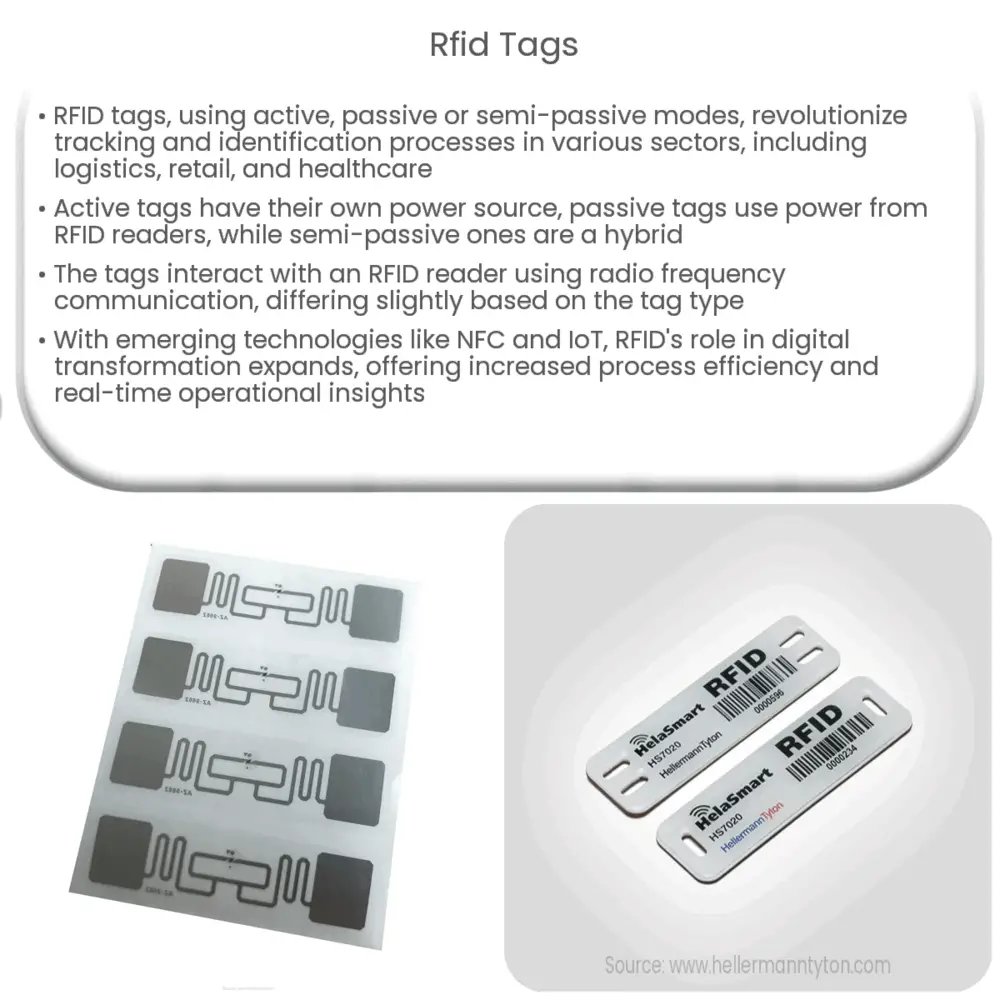Explore the world of RFID tags – understand their types, working principle, applications across industries, and their future potential.

Understanding RFID Tags
Radio Frequency Identification, popularly known as RFID, is a technology that has significantly revolutionized tracking and identification processes in a myriad of industries. At the heart of this system are the RFID tags, compact and sophisticated devices that have the power to transform operations in logistics, retail, healthcare, and beyond.
The Basics of RFID Tags
The fundamentals of an RFID system lie in the relationship between two core components: the RFID tag and the RFID reader. The tag contains an integrated circuit for storing and processing information, along with an antenna to receive and transmit the signal. RFID tags can be either active, passive, or semi-passive, each offering its unique capabilities depending on their design and power source.
- Active RFID Tags: These tags have their own power source, usually a battery. Because of this, they can transmit signals independently and can be read from a significant distance, often more than 100 meters.
- Passive RFID Tags: These do not have their own power supply. Instead, they draw power from the electromagnetic field generated by the RFID reader. These tags are used for short-range tracking and are smaller and cheaper than their active counterparts.
- Semi-Passive RFID Tags: Semi-passive tags are a hybrid. They contain a battery to power the chip but rely on the reader to broadcast a signal.
Applications of RFID Tags
RFID tags are utilized in a broad range of applications due to their versatility and efficiency. Here are some key industries where they have made a significant impact:
- Supply Chain Management: They are widely used to track goods in transit, providing valuable real-time data about location and status. This helps in minimizing losses and improving efficiency.
- Retail: In retail settings, RFID tags are commonly used to prevent theft, manage inventory, and enhance the customer experience by reducing checkout times.
- Healthcare: RFID tags are used to track medical equipment, manage patient records, and even monitor patient movement within a healthcare facility.
In the upcoming section, we will dive deeper into the working of RFID tags and explore how they interact with the RFID reader to provide seamless tracking and identification.
How RFID Tags Work
RFID tags function based on the principle of radio frequency communication. An RFID system consists of an RFID reader and the tag. The RFID reader sends out electromagnetic waves, which the tag’s antenna is designed to receive. Depending on the type of the RFID tag—active, passive, or semi-passive—the communication process may differ slightly.
- Active Tags: Active RFID tags utilize their internal power source to send radio waves to the reader. The reader then captures these waves and converts them into data.
- Passive Tags: For passive RFID tags, the reader emits radio waves first. These waves are captured by the tag’s antenna, providing power for the tag to send a response back to the reader.
- Semi-Passive Tags: Semi-passive tags, like passive tags, respond to the reader’s signal. However, they use their internal battery to power the internal chip, facilitating a stronger return signal.
In essence, the communication process between the reader and tag is initiated by the reader, and the tag responds with the information it holds. This information is then processed by the reader and used for various purposes, depending on the application.
The Future of RFID Tags
As technology advances, the potential for RFID tags continues to expand. With advancements like near-field communication (NFC) and integration with Internet of Things (IoT) devices, RFID is steadily becoming more integral to our daily lives. From contactless payments to smart homes and cities, the applicability of RFID technology seems boundless. RFID is poised to play a significant role in digital transformation across industries, enhancing efficiency and accuracy in processes, and providing unprecedented visibility into operations.
Conclusion
RFID tags, in their varying forms, are powerful tools that provide a broad spectrum of industries with the ability to track, identify, and manage assets more effectively. The technology has already proven invaluable in sectors such as retail, logistics, and healthcare, with its potential only set to increase as technological advances continue. The future of RFID tags is undoubtedly bright, promising a world of seamless integration, real-time data, and improved efficiency.

